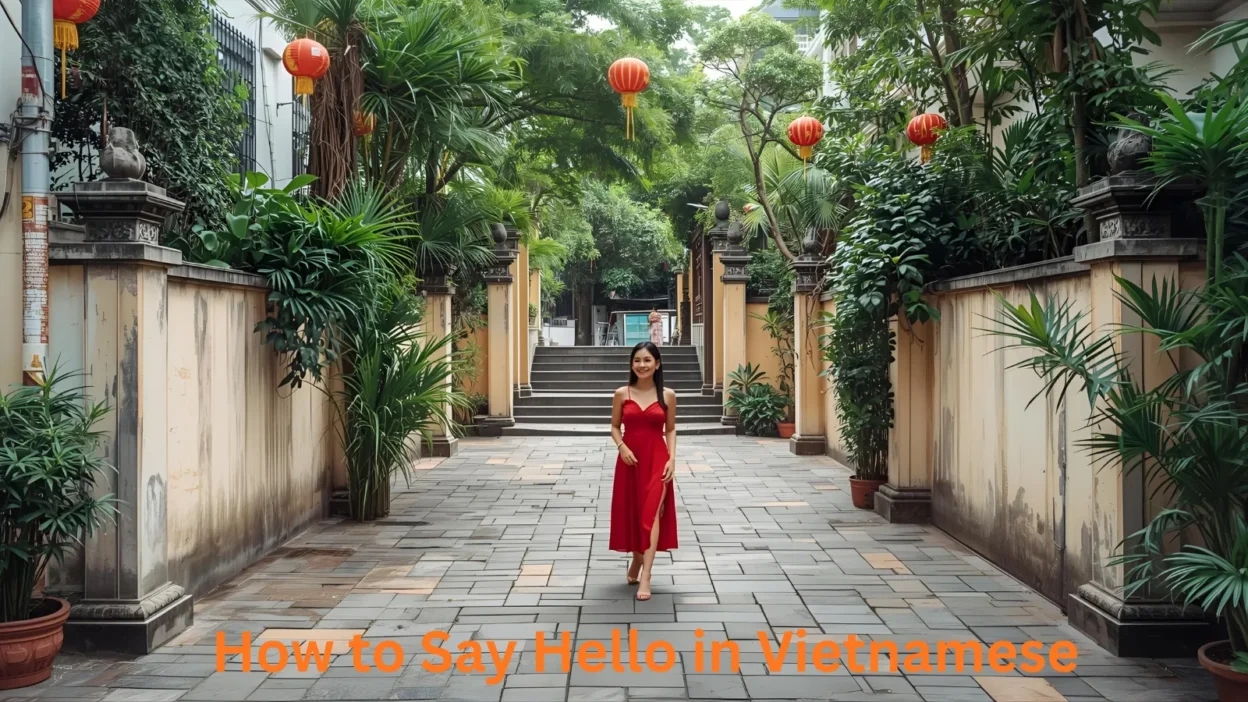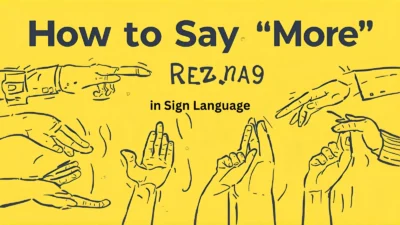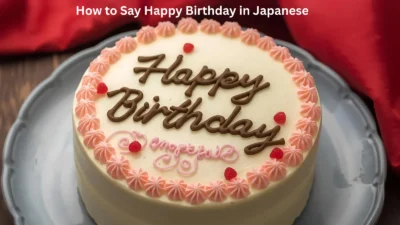How to Say Hello in Vietnamese is one of the first phrases you should learn when starting the language. Greetings in Vietnamese change depending on age, respect, and social context, so knowing the right word makes you sound more natural.
You can learn how to say hello in Vietnamese formal settings for elders or authority, and also how to say hello in Vietnamese informal ways when greeting friends or peers.
Additionally, knowing how to say hello in Vietnamese to a woman shows cultural respect and helps you sound more polite in everyday interactions.
Say Hello in Vietnamese
Ready to greet like a native? Here are 15 real ways to say hello in Vietnamese, complete with dialogue examples and a look at where each phrase is used and why it matters.
15 Phrases table for How to Say Hello in Vietnamese
| # | English Phrase | Vietnamese Greeting | Pronunciation |
|---|---|---|---|
| 1 | Hello (general) | Xin chào | sin chow |
| 2 | Hi (informal) | Chào | chow |
| 3 | Hello (to an elder) | Chào ông/bà | chow ohng / bah |
| 4 | Hello (to a woman) | Chào chị | chow chee |
| 5 | Hello (to a younger person) | Chào em | chow em |
| 6 | Good morning | Chào buổi sáng | chow boo-ee sahng |
| 7 | Good afternoon | Chào buổi chiều | chow boo-ee chee-ehw |
| 8 | Good evening | Chào buổi tối | chow boo-ee toy |
| 9 | Welcome | Hoan nghênh | hwon n-geng |
| 10 | How are you? (as hello) | Bạn khỏe không? | ban kweh khong |
| 11 | Hello teacher | Chào thầy/cô | chow thay / koh |
| 12 | Hello everyone | Xin chào mọi người | sin chow moi ngoo-ee |
| 13 | Long time no see | Lâu rồi không gặp | lo zoi khong gup |
| 14 | Hello friend | Chào bạn | chow ban |
| 15 | Hello politely (formal intro) | Xin kính chào | sin king chow |
1. Xin chào — Hello (General)
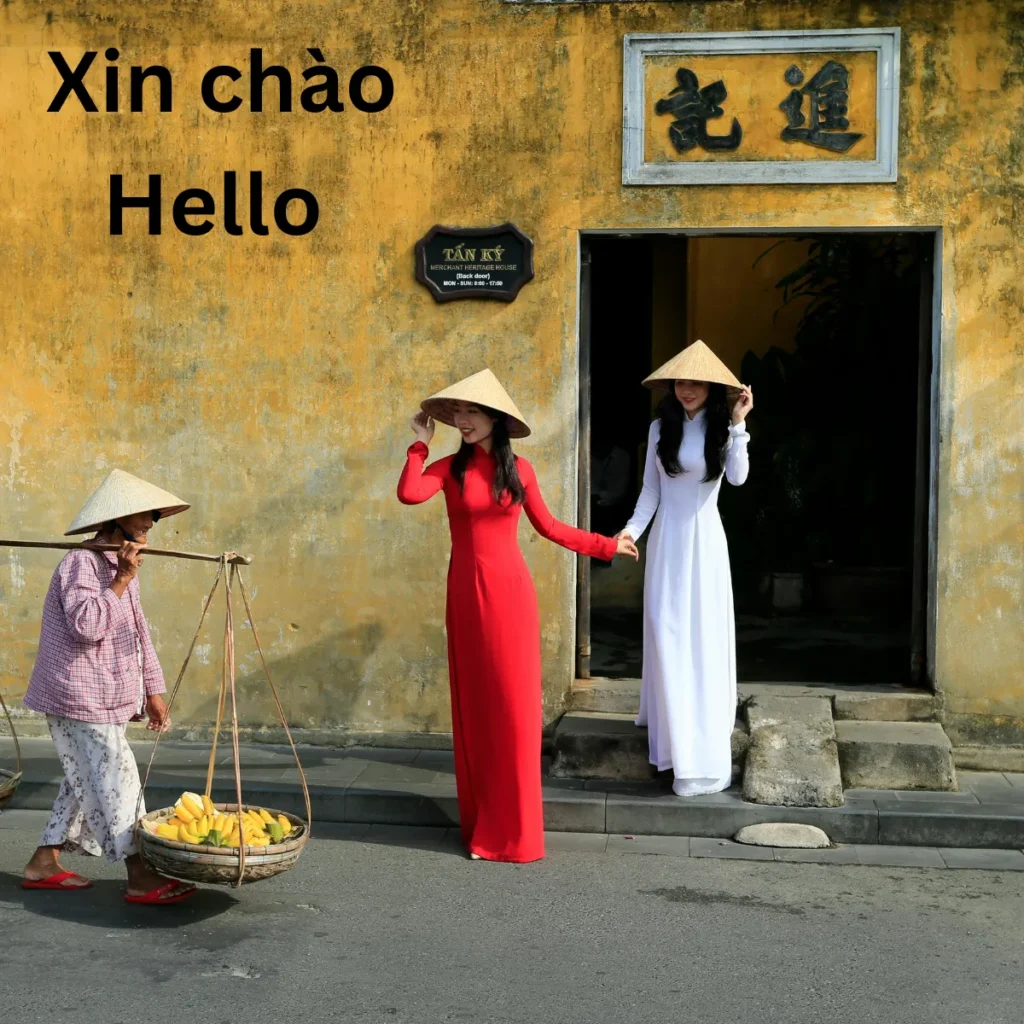
Origin:
A formal, polite way to say hello, “xin” adds politeness, and “chào” means “greet.” It’s appropriate in almost any situation.
Example:
👤 User A: Xin chào, bạn khỏe không? (Hello, how are you?)
👤 User B: Xin chào! Tôi khỏe, cảm ơn. (Hello! I’m good, thank you.)
Use: Formal or neutral; great for meeting strangers or in business.
2. Chào bạn — Hello, friend
Origin:
“Chào” means greet, and “bạn” means friend or peer. It’s friendly but still respectful.
Example:
👤 User A: Chào bạn! Bạn tên là gì? (Hello! What’s your name?)
👤 User B: Mình là Linh. Rất vui được gặp bạn! (I’m Linh. Nice to meet you!)
Use: Friendly and warm, often used between people of similar age.
3. Chào anh — Hello (to older male)
Origin:
“Anh” means older brother, used to show respect to a slightly older male.
Example:
👤 User A: Chào anh! Anh có khỏe không? (Hello! Are you well?)
👤 User B: Chào em, cảm ơn em. (Hello, thank you.)
Use: When speaking to an older male, often in their 20s or 30s.
4. Chào chị — Hello (to older female)
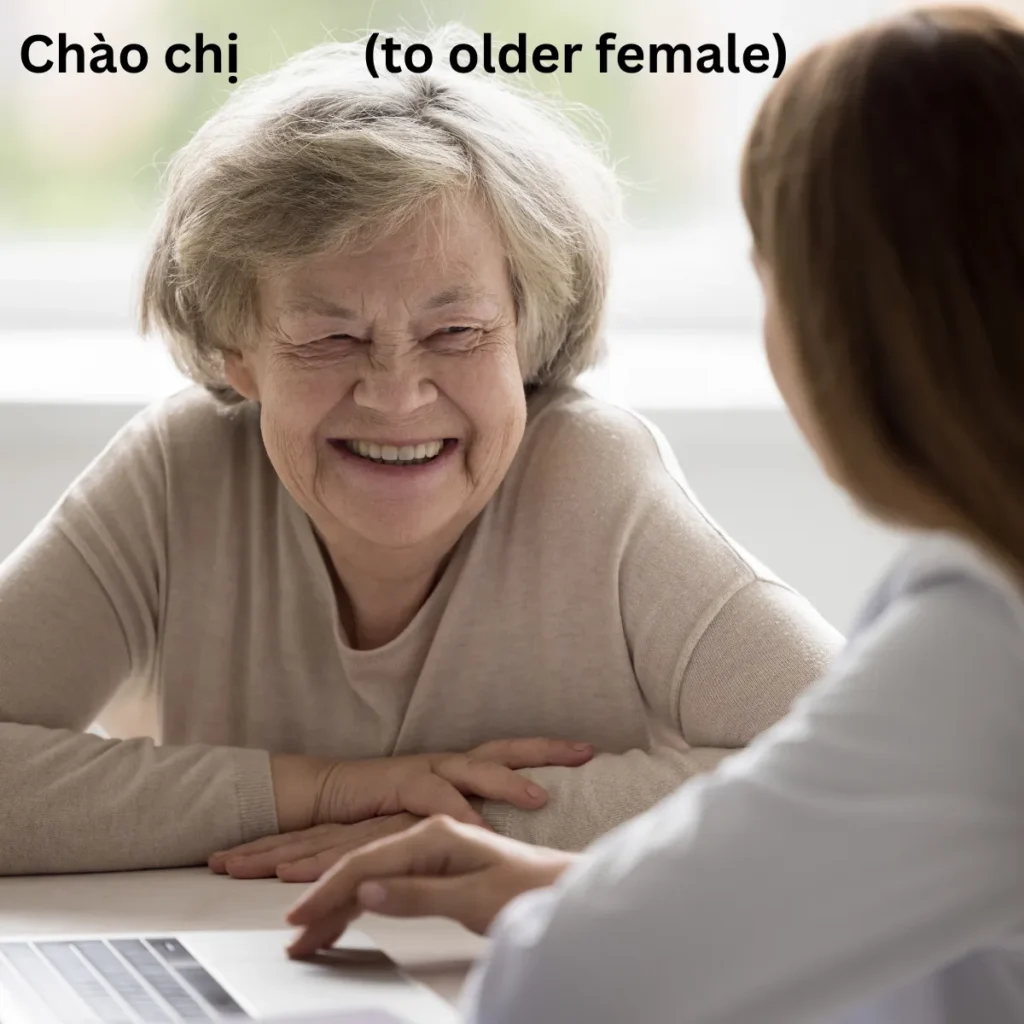
Origin:
“Chị” means older sister and shows respect to a slightly older woman.
Example:
👤 User A: Chào chị! (Hello!)
👤 User B: Ừ, chào em. (Yeah, hello!)
Use: Polite greeting for women older than you.
5. Chào em — Hello (to younger person)
Origin:
“Em” means younger sibling and is used to greet someone younger.
Example:
👤 User A: Chào em! Em học lớp mấy rồi? (Hi! What grade are you in?)
👤 User B: Dạ, em học lớp 8. (I’m in 8th grade.)
Use: Polite and caring; often used by teachers, older friends, or relatives.
6. Chào cô — Hello, Ms./Teacher
Origin:
“Cô” refers to a female teacher or woman older than your parents’ age.
Example:
👤 User A: Chào cô ạ. (Hello, ma’am.)
👤 User B: Chào con. (Hello, child.)
Use: Respectful; for teachers or such as older people.
7. Chào chú — Hello, Uncle
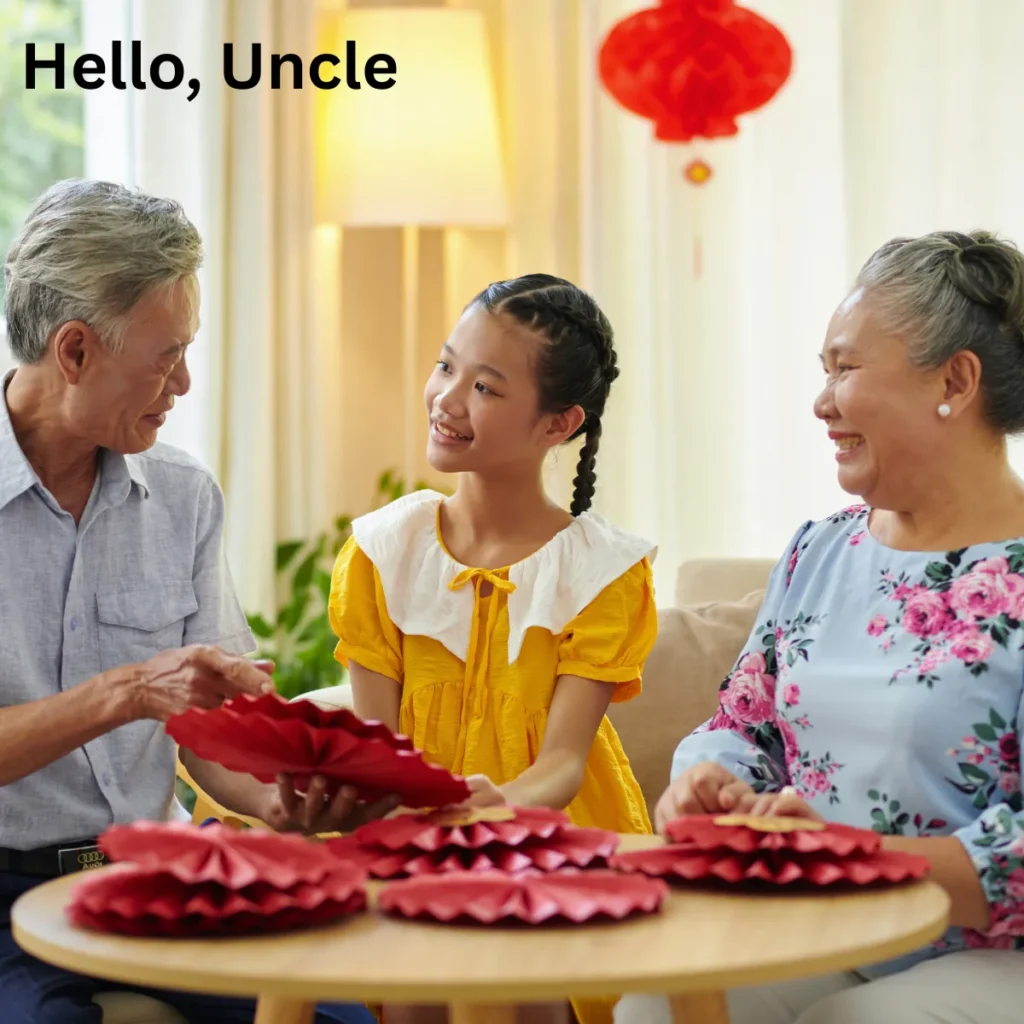
Origin:
“Chú” is used for a man around your dad’s age or younger uncle.
Example:
👤 User A: Chào chú, lâu quá không gặp! (Hello, uncle! Long time no see!)
👤 User B: Ừ, chào cháu. (Yes, hello, nephew/niece.)
Use: Respectful greeting for an older male.
8. Chào bác — Hello, Sir/Madam
Origin:
“Bác” refers to an older adult (usually 50+) and shows deep respect.
Example:
👤 User A: Chào bác ạ. (Hello, sir/madam.)
👤 User B: Chào cháu. Cháu khỏe không? (Hello, child. Are you well?)
Use: Very polite; used for the such as older people.
9. A lô — Hello (on the phone)

Origin:
Borrowed from the French “Allô,” this is specifically used to answer the phone.
Example:
📞 User A: A lô?
📞 User B: A lô, cho tôi gặp Nam được không? (Hello, may I speak to Nam?)
Use: Only for phone calls.
10. Ê — Hey (very informal)
Origin:
A slangy or teasing way to get someone’s attention, especially among close friends.
Example:
👤 User A: Ê, mày đi đâu đấy? (Hey, where are you going?)
👤 User B: Đi chơi nè! (Just going out!)
Use: Very informal; use with close friends only.
11. Hi — Hi (borrowed English)
Origin:
Vietnamese youth often use “Hi” in casual text messages or when speaking English.
Example:
👤 User A: Hi Linh! Long time no see!
👤 User B: Hi! How have you been?
Use: Casual; mostly among teens or online.
12. Chào thầy — Hello, teacher (male)
Origin:
“Thầy” means male teacher or mentor.
Example:
👤 User A: Chào thầy ạ. (Hello, teacher.)
👤 User B: Chào em. Em học tốt nhé. (Hello. Study well.)
Use: Formal and respectful; used for male teachers.
13. Chào con — Hello, child
Origin:
“Con” means child and is used by elders to greet younger people affectionately.
Example:
👤 User A: Chào con, hôm nay đi học vui không? (Hello, child. Was school fun?)
👤 User B: Vui lắm bà ơi! (Very fun, grandma!)
Use: Warm and family-oriented; used by adults toward children.
14. Chào các bạn — Hello, everyone
Origin:
“Các bạn” means “you all” or “friends.” It’s how teachers or leaders greet groups.
Example:
👤 User A: Chào các bạn! Hôm nay chúng ta học gì? (Hello, everyone! What are we learning today?)
👤 User B: Học tiếng Anh! (English class!)
Use: Polite group greeting.
15. Kính chào quý vị — Respectful hello to an audience
Origin:
A formal greeting used in public speaking, ceremonies, or on TV.
Example:
🎤 User A: Kính chào quý vị và các bạn. (Respectful greetings, everyone.)
🎤 User B: Xin cảm ơn sự có mặt của quý vị. (Thank you for your presence.)
Use: Highly formal; used in announcements or speeches.
FAQs
1. What is the most common way to say hello in Vietnamese?
The most common greeting is Xin chào, which works in almost any situation.
2. Is there a polite way to say hello in Vietnamese?
Yes! Adding the person’s title or age, like Xin chào bác (Hello, uncle/aunt) or Xin chào anh/chị (Hello, older brother/sister), shows respect.
3. Can I greet friends casually in Vietnamese?
With close friends, you can simply say Chào or Chào bạn, which is informal and friendly.
4. How do I greet someone older or respected?
Use Xin chào with proper titles and slightly bow your head or gesture politely to show respect.
5. How do children usually say hello in Vietnam?
Kids often use Chào with a smile or small bow when greeting parents, teachers, or friends.
6. Can I say hello on the phone in Vietnamese?
Yes! Many people answer with A lô (Hello) when picking up a phone call.
7. Are there regional differences in greetings?
Northern, central, and southern Vietnam may use slightly different tones or words, but Xin chào is universally understood.
8. Can body language enhance saying hello?
Yes! A slight bow, smile, or gentle hand gesture adds politeness and friendliness.
9. How do I greet a group of people in Vietnamese?
Say Xin chào mọi người to politely say “Hello everyone.”
10. Are there playful or slang ways to greet friends?
Young people sometimes say Chào cậu (Hey you) or use emojis in online chats for casual greetings.
Conclusion:
Learning how to say hello in Vietnamese—whether in formal, informal, or gender-specific contexts—helps you communicate politely and confidently. By practicing different greetings, you’ll not only sound natural but also show cultural respect in every situation.
